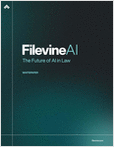Like the last law school dean who ventured to discuss legal education on The New York Times’ opinion pages, Lawrence Mitchell in 2012, University of California, Irvine School of Law dean Erwin Chemerinsky has not been well received by many who read the piece he authored with UC Irvine professor Carrie Menkel-Meadow, “Don’t Skimp on Legal Training.”
Most of the negative response to the piece, though, has focused on the authors’ misinterpretation of employment data in a way that trivializes the jobs crisis that law graduates currently face. What’s been missing so far is an evaluation of the actual argument advanced by Chemerinsky and Menkel-Meadow, if only in the last third of their article: that relaxing undergraduate prerequisites or reducing law school class time to two years will result in insufficient training in diverse subjects at a time that new lawyers need it most. I will deal with each of these points in turn.
Undergraduate Requirements
To begin with, Chemerinsky and Menkel-Meadow misunderstand the undergraduate education requirements that most states maintain for would-be lawyers seeking a license to practice. They write, “Some, including the [
Actually, according to the Comprehensive Guide to Bar Admission Requirements [PDF] produced by the ABA and the National Conference of Bar Examiners, 30 states do not require attorneys to have “a specified period of prelegal education” to sit for the bar (chart 1). A handful of other states have only minimal undergraduate education requirements. The ABA, on the other hand, requires law schools to admit only applicants who have completed three-fourths of the requirements for a bachelor’s degree (Standard 502). Since most state licensing authorities either find licensing non–college graduates unobjectionable or defer to the ABA’s standards, there isn’t much reason to believe that scaling back the ABA’s prelegal requirements would seriously impair lawyer quality.
Chemerinsky and Menkel-Meadow cite no direct evidence that proves requiring lawyers to have college degrees makes them better lawyers, which is just as well, because it would be a difficult proposition to test anyway given that, according to the Bureau of Labor Statistics (BLS), only 1.3 percent of lawyers skipped college.
Instead, the authors point to other countries—namely South Korea, Japan, China and Australia—that are adding undergraduate requirements for attorneys. Obviously, just because the U.S. does something doesn’t mean it works or that other countries should emulate it. Nor does it help that the first three countries they named use civil code legal systems rather than common law frameworks as the U.S. does, so the authors’ comparison is shaky.
Japan’s reforms in particular show why copying the U.S. isn’t always a good idea. The country’s decision to authorize 74 new law schools in only a few years has been a remarkable failure. The purpose was to improve the country’s low bar-passage rates, expand the legal profession and encourage new lawyers to move to rural areas (another dubious argument heard in the U.S.). Instead, too many graduates have failed the bar, and many passers have been unable to find work, wasting a lot of people’s time and effort in the process. As of last year, at least one school had closed, and many more will certainly follow. Clearly, emulating the U.S. model was not a good move.
Ultimately, most states already have loose prelegal education prerequisites, and the comparison Chemerinsky and Menkel-Meadow make between the American legal education system and those in other countries is weak.
Reducing Law School Class Time
Chemerinsky and Menkel-Meadow worry that easing law school classroom instruction requirements would result in cutting “clinical education and interdisciplinary courses.” As a lover of the liberal arts (and even the humanities), I have less of a problem than most legal education critics with the idea of law schools offering diverse courses. However, over the last decade the number of law professors has grown spectacularly, as has their pay (a problem the authors correctly mention but don’t bother to delve into). What have these instructors been doing if not teaching interdisciplinary courses and clinical training? Far from skimping on legal training, law schools have done precisely what Chemerinsky and Menkel-Meadow have asked for.
This expansion of legal education dwarfs the fluctuations in enrollment and is attributable to the opening of new law schools as well as to existing schools adding faculty lines. In fact, the legal academy has grown much faster than the legal profession itself.

(Source: ABA-LSAC Official Guide to the ABA Law Schools (Official Guide), Bureau of Labor Statistics Occupational Employment Statistics (OES) program, Employment Projections (EMP) program, and the Current Population Survey (CPS))
A word on the data used in this chart: The OES program is based on a survey sent to employers, and only captures salaried workers. Thus, it’s more useful for measuring law teachers and not lawyers because law teachers tend not to be self-employed unless they work part-time. A weakness of the OES program is that it surveys employers, so with only a couple hundred ABA–accredited law schools, the sample size might not be large enough to provide accurate readings. On the other hand, the OES survey captures law teachers at non–ABA law schools. The Official Guide gives precise numbers of full-time tenure-track faculty, nontenured full-time teachers (e.g., legal writing and clinicians) and “deans, librarians and others who teach” at each accredited law school. The CPS tracks all lawyers including self-employed ones but not law teachers.
For those curious about both occupations’ wage-and-salary incomes, the OES data show that highly paid law teachers are catching up to lawyers. Tellingly, the OES survey doesn’t break down law teachers’ pay at an hourly rate because, unlike lawyers, professors often don’t work year-round. The implication is that although law teachers earn less annually, their effective hourly wages are much higher than lawyers’.

Unfortunately, the best empirical evidence shows that contrary to the authors’ pleas—and despite the variety of courses and clinics students are exposed to, thanks to there being so many more law professors—law school graduates’ incomes have not only failed to increase but have obviously declined with the Great Recession.

(Source: National Association for Law Placement (NALP), Official Guide, author’s calculations)
(It should be noted that graduates working full-time in nonprofessional positions earn substantially less than the median income for a full-time college graduate in the 25-34 age bracket ($47,342 in 2012). This suggests that obtaining a law degree added very little value to these graduates’ productivity.)
If demand for lawyers’ work depresses starting salaries more than adding faculty raises them, then shrinking the legal academy is unlikely to have any negative consequences for graduates and clients. Indeed, if Chemerinsky and Menkel-Meadow are right that education influences incomes more than experience and demand for legal services, then we’d expect to see higher employment rates for graduates as well as evidence that older lawyers are returning to law school for retraining so they can compete with newer entrants to the field. Nothing like this is going on.
The best explanation is that the legal academy is bloated with instructors who add no value to students’ abilities. Consequently, although I think eliminating the third year of law school is an arbitrary reform (why not a year and a half?), it probably won’t diminish law school graduates’ effectiveness.
Why Will the 21st Century Be so Awful?
Finally, the arguments offered by Chemerinsky and Menkel-Meadow depend on a perception that the problems of the present and future will be more intractable than those of the recent past. The pair give a list of examples, like challenges in banking law, international security, Internet law and others. But they never justify the urgency they claim these problems pose. Society always has problems, but the obstacle is not a shortage of people knowledgeable enough to generate solutions. Rather, it is that entrenched political power opposes policies that would work. Training lawyers better, which the evidence says we’re doing already, hasn’t helped appreciably. Indeed, one could point out that the problems of student loan debt and underemployment are pressing problems too. For lawyers, though, overeducation is part of the cause—not the solution.
Matt Leichter is a writer living in Brooklyn, N.Y. He received his dual degree in law and international affairs from Marquette University. He operates The Law School Tuition Bubble, which archives, chronicles, and analyzes the deteriorating American legal education system. It is also a platform for higher education, student debt and fiscal reform.






